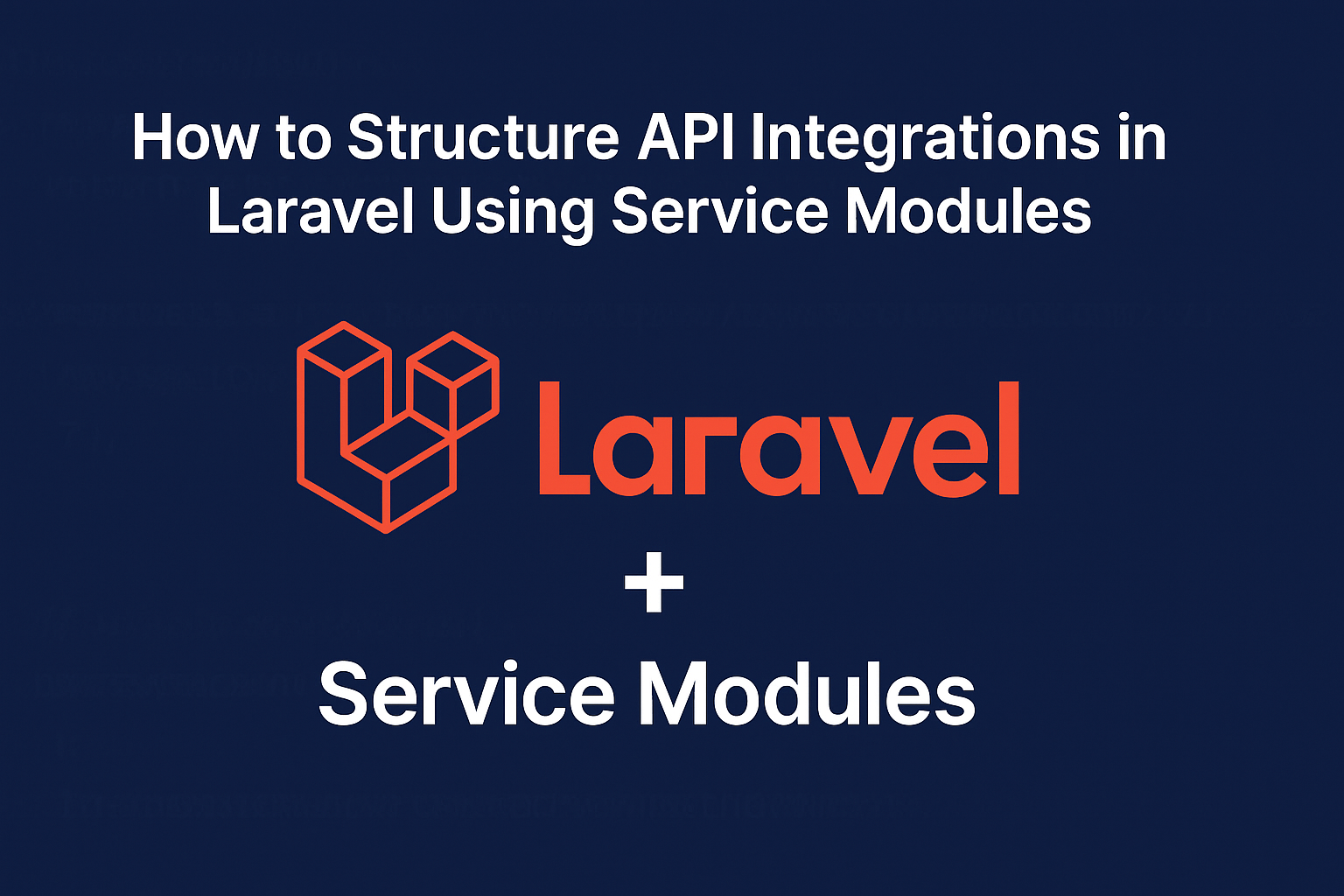How to Structure External API Integrations in Laravel Using Scalable Service Modules (Step-by-Step Guide)
As Laravel developers, integrating external APIs is part of our everyday development journey — from connecting to third-party services to exchanging real-time data. But as projects grow, what begins as a simple API call can quickly turn into a tangled mess of code that’s hard to maintain, test, or scale.
In this post, we’ll walk through a clean and modular approach to handling API integrations in Laravel using a pattern we call Service Modules. By the end, you’ll be able to build integrations that are reusable, testable, and scalable — ideal for both startup MVPs and enterprise-grade systems.
✅ Why the Default Approach Fails Over Time
Let’s be honest — calling an API directly in the controller is quick and gets the job done. But as soon as you need to reuse that logic, handle failures properly, or test different cases, it becomes a nightmare. Here's what usually goes wrong:
- 🔁 Duplicate code across multiple controllers or services
- 🔗 Tight coupling between controllers and HTTP logic
- 🔍 Difficult testing due to hardcoded logic
- ❌ Scattered error handling and inconsistent responses
- 🧩 Unclear data structures, making refactoring hard
🧠 Introducing Service Modules Architecture
Service Modules combine a few well-known patterns:
- Repository Pattern – isolates external communication logic
- DTO (Data Transfer Object) – defines structured return values
- Facade – provides a clean and centralized access point
- Factory & Provider – supports environment-based service switching
- Custom Exceptions – offers consistent error reporting
This layered approach helps you keep controllers thin, improves testability, and prepares your application for future scale.
🛠️ Step-by-Step: Building a Weather Service Module
Let’s say you’re building a weather widget using the weatherapi.com API. Instead of cluttering your controller with HTTP calls, you’ll do the following:
1. Create a Repository
This class wraps all API logic and handles communication cleanly.
class WeatherRepository
{
public function getByCity(string $city): array
{
$response = Http::get(...);
// Handle failure and return response
}
}
2. Define an Interface
This allows us to swap repositories (e.g. mock, cached, or real).
interface WeatherInterface {
public function getByCity(string $city): array;
}
3. Use a Facade
Access your service easily from anywhere in the app without repeated injections.
Weather::getByCity('London');
4. Create a Custom Exception
Centralize error messages like WeatherException for better debugging and consistency.
5. Register a Service Provider
Bind your interface to the right repository based on environment or logic.
$this->app->bind(WeatherInterface::class, WeatherRepository::class);
6. Return DTOs Instead of Arrays
Define a WeatherData DTO that clearly outlines what the API returns.
new WeatherData(location: 'London', temperature: 23.4, condition: 'Sunny');
🧪 Benefits You’ll Love
✅ Code Reuse – One clean implementation across your app ✅ Testability – Easily mock APIs and test business logic ✅ Maintainability – Add new providers or data layers without rewriting logic ✅ Error Safety – Catch and handle issues in a controlled way ✅ Scalability – Easily extend to multiple services like Stripe, Mailgun, or Twilio
🚀 Bonus: Automate It with a Package
Want to build Service Modules faster? Try the shreifelagamy/laravel-service-modules package. It scaffolds your DTOs, providers, facades, and more — all with a simple Artisan command.
🔚 Final Thoughts
APIs power modern web apps, but without the right structure, they become a pain to manage. By adopting the Service Module approach, you’re investing in clean code, happy developers, and a future-proof architecture.
Whether you're building a weather feature or integrating payment gateways — structure matters. Adopt service modules, and your future self will thank you.

